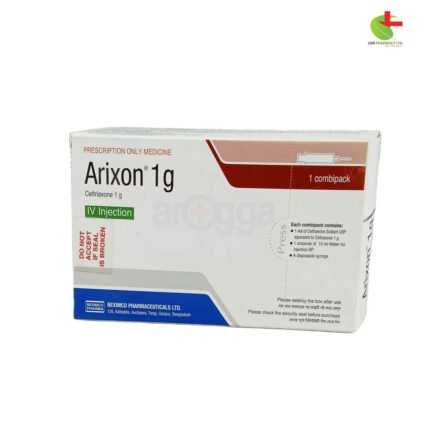Ferintus
700.00৳ Bottle (10ml)
- Ferintus is an intravenous iron therapy used to treat iron deficiency anemia in adults.
- It is particularly beneficial for patients who cannot tolerate oral iron or have chronic kidney disease.
- The active ingredient, Ferric Carboxymaltose, releases iron gradually to restore iron levels.
- Ferintus offers a quick and efficient solution for iron repletion with minimal side effects.
 Brand
Brand
|
Beximco Pharmaceuticals Ltd |
|---|---|
 Generics
Generics
|
Ferric Carboxymaltose |
 Size
Size
|
Injection |
Indications
Ferintus is prescribed for treating iron deficiency anemia in adults, particularly in:
- Patients who cannot tolerate oral iron or have not responded well to it.
- Those with chronic kidney disease who are not on dialysis.
Description
Ferintus is a colloidal iron (III) hydroxide combined with Carboxymaltose, a carbohydrate polymer, designed to gradually release iron into the body.
Dosage & Administration
Ferric Carboxymaltose dosing follows a systematic approach:
- Determine the required iron dosage:
Based on the patient’s weight and hemoglobin (Hb) levels:- Hb <10 g/dL:
- <35 kg: 500 mg
- 35-70 kg: 1500 mg
-
70 kg: 2000 mg
- Hb 10-14 g/dL:
- <35 kg: 500 mg
- 35-70 kg: 1000 mg
-
70 kg: 1500 mg
- Hb >14 g/dL:
- <35 kg: 500 mg
- 35-70 kg: 500 mg
-
70 kg: 500 mg
- Hb <10 g/dL:
- Administer the correct iron dosage:
A single dose should not exceed:- 15 mg of iron/kg (IV injection) or 20 mg of iron/kg (IV infusion)
- 1000 mg of iron per week.
- Post-treatment assessment:
Reassess hemoglobin levels at least four weeks after the last dose. If further iron is required, recalculate the dosage accordingly.
Note: Always follow your doctor’s guidance when using this medication.
Drug Interactions
No formal studies have been conducted on drug interactions with Ferintus.
Contraindications
Do not use Ferintus in cases of:
- Hypersensitivity to Ferric Carboxymaltose or its components.
- Anemia not caused by iron deficiency.
- Iron overload or iron metabolism disorders.
Side Effects
Common side effects include nausea, headache, dizziness, and high blood pressure. Other potential reactions include injection site reactions, elevated liver enzymes, and hypophosphatemia.
Less common reactions are hypersensitivity, digestive issues, muscle pain, fatigue, and chest pain. Rare side effects include anaphylactoid reactions, bronchospasm, and angioedema.
Pregnancy & Lactation
Use of Ferric Carboxymaltose during pregnancy requires careful consideration of benefits and risks. It is not recommended during the first trimester unless necessary. Some studies suggest iron from Ferric Carboxymaltose may affect fetal bone development.
In breastfeeding women, the risk to infants is believed to be minimal.
Precautions & Warnings
Serious hypersensitivity reactions, including anaphylaxis, have been reported with Ferintus. Patients should be monitored during and after administration for at least 30 minutes.
Transient spikes in blood pressure may occur, usually resolving within 30 minutes. Be sure to monitor for signs of hypertension post-treatment.
Use in Special Populations
- Chronic Kidney Disease (on dialysis): The maximum daily dose should not exceed 200 mg.
- Children: Ferintus is not recommended for use in patients under 14 years old due to a lack of studies.
Overdose Effects
Excessive iron accumulation can lead to hemosiderosis. Monitoring iron levels (serum ferritin, transferrin saturation) is crucial for detecting iron overload. Standard treatment may include iron chelators.
Therapeutic Class
Parenteral Iron Supplements
Storage Instructions
Store Ferintus in a cool, dry place (below 30°C), away from light and moisture. Keep out of reach of children. Do not freeze.













Reviews
There are no reviews yet.